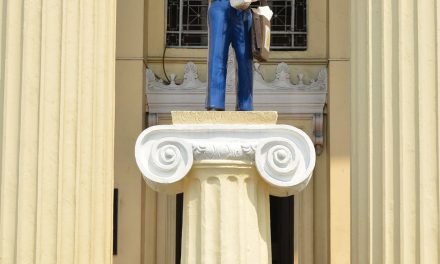
Grand designs
Built in 1926, the Manila Central Post Office is considered the grandest building and the most prominent landmark and tourist attraction in the city of Manila. Post & Parcel speaks to PHLPost about the devastating fire in May this year and the importance of refurbishing the building for future generations.
The Philippine postal system has a history spanning 256 years. In 1767, the first post office was established in the City of Manila under a new postal district of Spain.
It was then that the Badageros or horse-drawn letter carriers were dispatched to deliver mail from “Tribunal” or town hall to “Casa Real” or provincial capital.
During the 17th and 18th centuries, the exchange of mail between countries was largely governed by bilateral postal agreements with the establishment of the Universal Postal Union (UPU) on October 09, 1874.
 It was during the Philippine Revolution, when President Emilio Aguinaldo ordered the establishment of a postal service to provide post office services to Filipinos. The Bureau of Post finally joined the Universal Postal Union on January 1, 1922.
It was during the Philippine Revolution, when President Emilio Aguinaldo ordered the establishment of a postal service to provide post office services to Filipinos. The Bureau of Post finally joined the Universal Postal Union on January 1, 1922.
Built in 1926, the Manila Central Post Office is a neo-classical building located in Liwasang Bonifacio, near the bank of the Pasig River, designed by Filipino Architect Juan Marcos de Guzman Arellano. The Manila Post Office was strategically located by American urban planner Daniel Burnham at the foot of Jones Bridge for two reasons. First, was that the Pasig River could be used conveniently as an easy route for delivering mail and secondly, the post office could be accessible from all sides including Quiapo, Binondo, Malate, and Ermita.
Considered to be Architect Juan Arellano’s magnum opus, it was designed in the neoclassical style that expressed order and balance. Burnham’s plan was to pattern Manila after Washington DC and make it the ‘Paris on the Prairie’.
The cost of its construction was worth one million pesos. Fronting the huge, rectangular volume are the 14 Ionic pillars that are lined up above the steps just before entering the lobby. The main body of the building is capped by a recessed rectangular attic storey and flanked and buttressed by two semi-circular wings. Inside, the main lobby has subsidiary halls at each end housed under the semi-circular spaces roofed with domes. The two torches placed at the roof of the neo-classical building symbolise life, truth and the regenerative power of flame. The lion’s head above the ionic pillars are part of the building’s old gutter system or waterspouts lining the eaves of this historic building. The rainwater runoff from the roof on these spouts funnelled the water through the lions’ open mouths.
The post office was severely damaged in World War II during the Battle of Manila, after it suffered heavy artillery bombardment and saw fierce room-to-room fighting between the Americans and Japanese, who converted the edifice into a fortress by heavily barricading the rooms with sandbags and barbed wires.
In February, 1945, the post office was hit by artillery fire from the Americans as they bombarded it, and the assault set its interior ablaze. On February 22, the Americans were able to enter the post office through a window and eliminated the Japanese who retreated to the basement.
The building was subsequently rebuilt in 1946, after the war retaining most of its original design.
In 2018, the National Museum of the Philippines declared the Manila Post Office building as an “important cultural property” (ICP), meaning that it had “exceptional cultural, artistic, and historical significance to the Philippines”, allowing it to receive government funding for its protection, conservation and restoration.
The Manila Central Post Office building is a premier National Landmark situated in Manila, the Philippine’s Capital City. It receives, processes and delivers mail, parcels and other postal services both domestic and international. The iconic post office structure also housed the PHLPost corporate offices, regional Postal Area 3 Mega Manila and Manila Central Post Office of about 800 employees. The Manila Central Post Office is also a repository of historic commemorative stamps which is artistically produced and circulated to record, promote and showcase the country’s rich culture and history.
On May 21, 2023 a massive accidental fire tore through Manila’s historic post office building overnight, slightly injuring seven people and gutting the landmark.
The Philippine Postal Corporation (PHLPost) got hold of the fire clearance certificate issued by Arson investigators from the Bureau of Fire Protection (BFP) saying that the fire originated at the southern part of the basement, more particularly at the Mega Manila Storage Room (GSS) where office supplies, thinners, paint cans where piled in close proximity to the car batteries stored inside the room.
The Manila Central Post Office Building has been situated in Manila for the last 97 years. PHL Post is determined it will be restored for future generations. In the meantime the Manila Central Post Office has been relocated to the Surface Mail Exchange Department (SMED) in Delpan, Port Area while its PHLPost corporate offices are temporarily housed at the Central Mail Exchange Center (CMEC) facility in Pasay City and its Regional Mega Manila Area Office has been relocated at Quezon City Central Post Office.
Restoration
The Philippine Postal Corporation (PHLPost) has taken initial steps towards restoring the fire-hit Manila Central Post Office (MCPO) building.
PHLPost welcomed the move of the Department of Tourism (DOT) to aid in the funding of the Detailed Architectural and Engineering Study (DAES) through the Tourism Infrastructure and Enterprise Zone Authority (TIEZA).
The Department of Tourism is now looking at developing the iconic building as part of a cultural circuit in the City of Manila.
While PHLPost is waiting for the implementation of DAES, a conservation architect has been tapped to identify the items or materials left by a fire that has historical value and facilitate its tagging, cataloguing, and retrieval to serve as a reference in the actual restoration of the MCPO building.
PHLPost is also working on the shoring of the building. This is a process to temporarily support the structure, vessel, or trench with shores (a timber or metal props) to avoid danger of collapsing during repairs or alterations.
After the fire, rain waters were trapped on the third floor. PHLPost undertook declogging of the gutters where rain waters are running off the building.
Plans of preserving the historic building are now being set in motion with the help of the Inter Agency Task Force for Cultural Heritage (IATF-CH) member agencies composed of cultural authorities including the Department of Tourism, PHLPost and the City of Manila. As long as the IATF-CH has no reservation on the use of the building, PHLPost is open for any collaborations on the building.
PhlPost Postmaster General Luis Carlos commented on the significance of the building to the community: “As a symbol of Filipino resiliency, we will not forget how this structure has stood through war and remains as proof of Manila’s historic past.
The Post Office building, which serves as the headquarters of the Philippine Postal Corporation (PHLPost) has a significant role in the country’s history and culture.
The Manila Central Post Office’s imposing structure is deeply rooted in the history of the Philippines.
The building is beyond a regular workplace. It is a home to many historic and memorable events and pays tribute to great Filipinos who were immortalized through postage stamps. The grand design of the building and the Philippine stamps it produces brings pride and joy to millions of Filipinos here and around the world.
PHLPost has played an integral part in serving the country and connecting people, including those in the remotest parts.
Historically, the building is an important structure that has to be preserved and restored in its old glory. The imposing Manila Central Post Office building is one of the most iconic landmarks in the country. It has endured many challenges until our country gained its democracy.
We welcomed Philippine Tourism Secretary Tourism Christina Frasco’s pronouncement that the historic building is a cultural and historic treasure that needs national attention and support.
In order to restore the historic edifice of the Manila Central Post Office there has been an integrated, multi-sectoral and collaborative process whereby different agencies are coming together to address complex challenges. Initial steps have been undertaken to immediately restore the building and will continue to collaborate with our partners to bring back the old glory of the historic building.”












